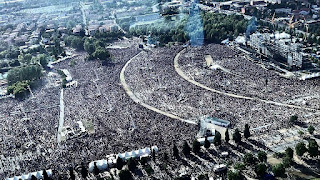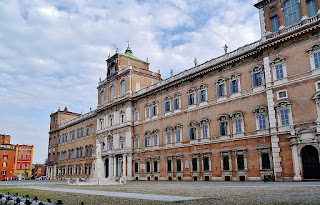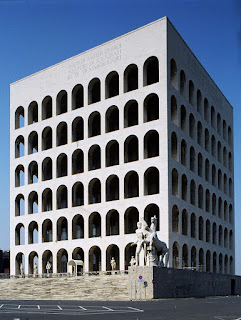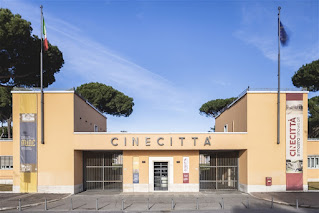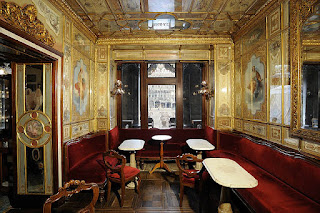2024 Sanremo winner whose parents both competed for coveted prize
The singer-songwriter Angelina Mango, whose career reached its high point so far when she won Italy’s annual Sanremo Festival in 2024, was born on this day in 2001 in the town of Maratea in Basilicata..jpg)
Angelina Mango represented Italy at
Eurovision after winning at Sanremo
Mango’s father, Pino Mango, who died in 2014, was a seven-times contestant at Sanremo between 1985 and 2007, achieving his highest finish on his final appearance, when Chissà se nevica - Who Knows if it Snows - placed fifth on the overall vote.
Her mother, Laura Valente, twice trod the famous stage at the Ariston Theatre - Sanremo’s host venue since 1977 - as the lead singer with the group Matia Bazar, finishing fourth in 1993 with Dedicato a te (Dedicated to You).
Angelina Mango’s victory came at the first attempt at the age of 22 when her song La noia (Boredom), which she co-wrote, won the most votes in a strong field.
She was the first female singer to win Sanremo since Arisa triumphed with Contravento (Against the Wind) in 2014.
Following a tradition whereby the winner of the Festival of Italian Song, to give Sanremo its official title, is invited to represent Italy at the Eurovision Song Contest, Mango presented a shortened version of La noia in the final in Malmo in May, finishing a respectable seventh out of 25 contestants.
Mango grew up in Lagonegro, a small town in the northern part of Basilicata where her father was born. She wrote her first song at the age of six, entitled Mi sono innamorata di me (I Fell in Love with Myself). Growing up close to her older brother, Filippo, she was performing for audiences even before entering her teens, singing in a band called Black Lake, in which Filippo played the drums.
 |
| Angelina Mango's father, Pino, performing at his first Sanremo Festival, 39 years before his daughter |
In December of the same year, while performing in a charity concert, Pino - generally known simply as Mango - suffered a fatal heart attack on stage at the age of 60.
Pino’s death had a profound effect on Angelina’s life. She quit high school and in 2016 moved with her mother and brother to Milan, her mother’s home city. She enrolled to study modern literature at another high school but dropped out after a month.
When Filippo, who is five years older, began to play the drums in a band in Milan, she joined as a singer. Audiences began to appreciate her vocal talent and in 2020 she released her first single and EP. In 2021 she performed in Milan Music Week and entered Sanremo Giovani, a competition for up-and-coming young artists that runs parallel to the main festival, although she did not make the televised final rounds.
After signing a contract with Sony Music, her first major break came in 2022 when she participated in Amici di Maria De Filippi, a talent show on Canale 5, Italy’s biggest commercial television channel, in which she won the singing section and finished second overall.
 |
| Eyecatching costumes are part of Angelina Mango's performing style |
More singles followed, with Che t’o dico a fa’ (What Did I Tell You to Do?) climbing to No 2 in the Italian singles charts, followed by a sell-out tour.
Success at Sanremo came in February 2024, her performances at the festival, which spans five nights and is broadcast live on Rai Uno, including an emotional interpretation of La rondine - The Swallow - a song written by her father.
Three months after Sanremo, Mango released her first album, Poké melodrama. She was invited to perform the single Melodrama during the final of Amici di Maria De Filippi. The album’s songs became part of the soundtrack of the Italian summer and Poké Melodrama reached No 1 in the Italian album charts. Another single from the album, Per due come noi - For Two Like Us - a duet performed with Olly, the singer-songwriter and rapper who would win Sanremo 2025, climbed to No 1 in the singles chart.
The only downside of an otherwise highly successful 2025 came right at the end, when a major new tour of Italy had to be cancelled after just three performances when Angelina developed inflammation of the pharynx, which meant she was unable to sing.
Travel tip:
The enormous statue of Christ the Redeemer
looms over Maratea and the surrounding area
Maratea, the town where Angelina Mango was born, today refers to a collection of settlements near the coast of the Tyrrhenian Sea of which the most interesting is Maratea itself, an historic hilltop village of steep, narrow streets and 44 churches around a charming central square, Piazza Buraglia, which has an elegant fountain at its centre and a variety of shops, bars and restaurants. Lively in the evenings, it has been likened to the famous Piazzetta di Capri, but without the hordes of visitors. The coastline below the village, a natural paradise of fine sandy beaches interspersed with rocky cliffs, has seen Maratea referred to as the Pearl of the Tyrrhenian Sea. Looming above the area is the enormous statue of Christ the Redeemer, a structure made from a mixture of concrete, white cement and marble from Carrara that was erected at the summit of nearby Monte San Biagio in 1965. At 21 metres (69ft) high and with an arm span of 19m (62ft), it is second in size only to the Christ of Corcovado in Rio de Janeiro.
Travel tip: 
The church of St Nicholas sits atop a promontory
in the mediæval village of Lagonegro in Basilicata
Situated in the valley of the Noce river some 27km (17 miles) northeast of Maratea, Lagonegro, where Angelina Mango grew up and the birthplace of her father, Pino, is a picturesque mediæval village that probably took its name from the dark waters of an Apennine lake once located nearby. The village is divided into two parts: the old village, which clings to a promontory around the ruins of the feudal castle, in which the Church of St. Nicholas, dating back to the 10th century, is the most prominent feature, and the new part, characterised by a large tree-lined square known locally as the "Piano". The old village, enclosed by the remains of the medieval towers and walls, is accessed via a scenic flight of steps leading to an entrance gate known as the Porta di Ferro. Lagonegro attracts tourists in the winter, thanks to the ski slopes of nearby Mount Sirino, and in summer for its walking trails among the cool forests.
Also on this day:
1598: The death of philosopher Jacopo Mazzoni
1762: The birth of physicist and professor Giovanni Aldini
1886: The death of physician and Garibaldi strategist Agostino Bertani
1920: The birth of politician Nilde Iotti
1926: An airship leaves Rome to make the first flight over the North Pole
1991: Moby Prince car ferry disaster


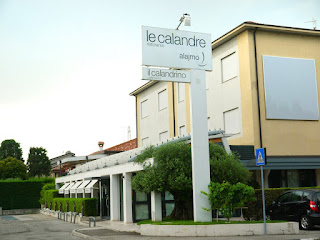






.jpg)

